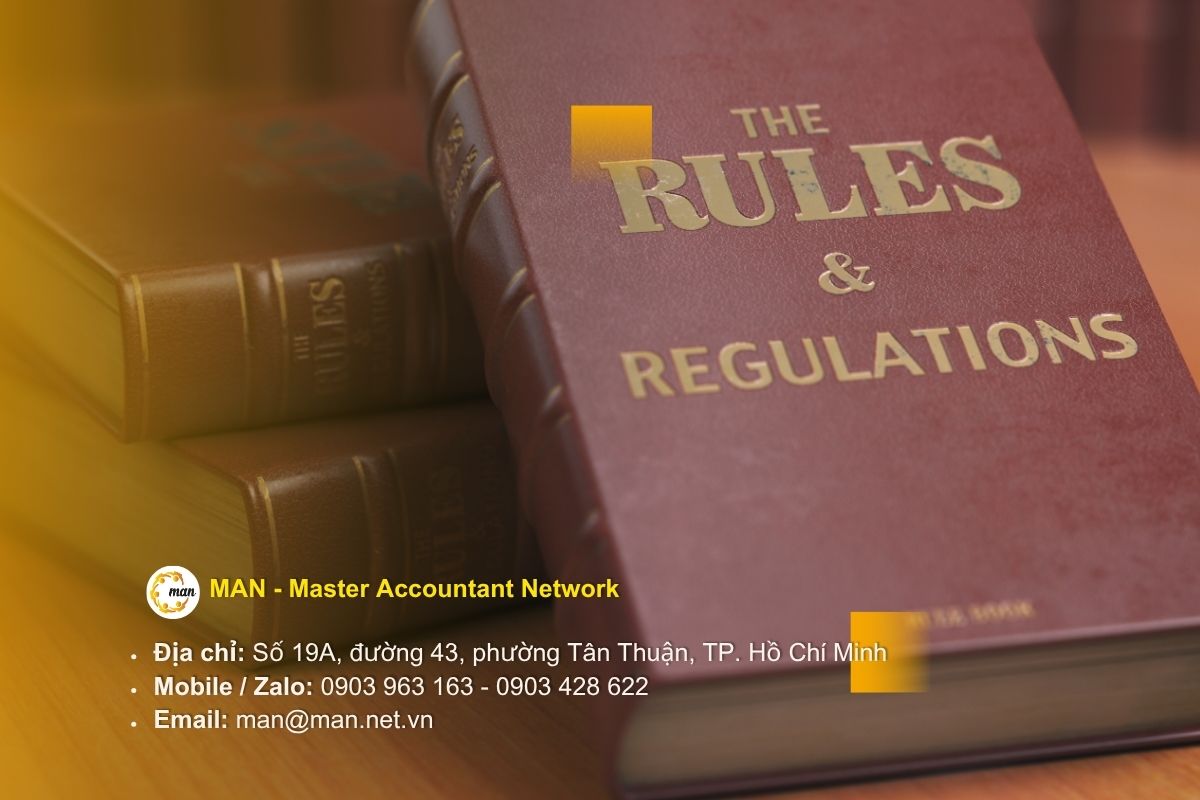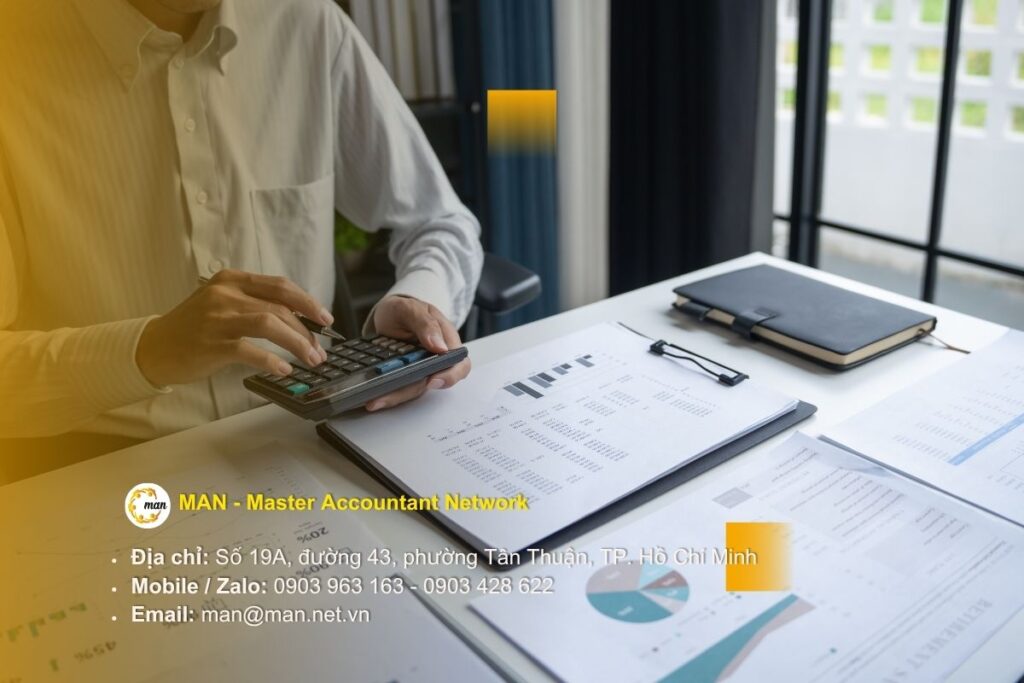Two businesses have affiliate transactions The same corporate income tax rate 20% and neither party enjoys tax incentives is a real situation that many businesses encounter when declaring taxes according to Decree 132/2020/ND-CP. This is a special case because although there is a related party transaction, since both parties apply the same tax rate 20% and neither party enjoys tax incentives, the enterprise can be exempted from detailed declaration and from preparing documents to determine the price of related party transactions. However, to avoid the risk of being questioned by the tax authorities, understanding the regulations correctly and preparing transparent evidence is still a decisive factor to help enterprises effectively manage compliance.
Regulations of Decree 132/2020/ND-CP on two enterprises having related-party transactions with the same corporate income tax rate 20% and neither party is entitled to tax incentives

Pursuant to Article 19 of Decree 132/2020/ND-CP, cases exempted from preparing Transfer Pricing Documents are prescribed as follows:
“If in a tax period there are only related party transactions between parties that are corporate income tax payers in Vietnam, both apply the same corporate income tax rate 20% and neither party enjoys tax incentives during the period, then according to Decree 132/2020, the enterprise can be exempted from declaring Section III, IV of Appendix I and from preparing documents to determine the price of related party transactions. However, the basis for exemption must be declared and the documents must be kept and ready to be presented when requested by the tax authority.”
Source: Law Library
Why is this rule reasonable?
The Arm's Length Principle requires that prices or terms between related parties be comparable to those in the market between independent parties with similar circumstances, functions, and risks. The goal is to prevent the use of internal transactions to shift profits and reduce tax obligations.
If both enterprises have related-party transactions at the same CIT rate 20% and neither party enjoys tax incentives, the adjustment of the intra-group transaction price will not usually change the total domestic CIT liability, as there is no tax advantage between the parties. Therefore, the policy allows for a reduction in the reporting burden in such a group of transactions.
Criteria for exemption from declaration of related party transactions under Decree 132
Two enterprises with related party transactions at the same corporate income tax rate 20% and neither party enjoys tax incentives are usually considered exempt from declaring Section III, IV and exempt from preparing the Transfer Pricing Documentation as prescribed in Article 19 of Decree 132/2020/ND-CP. This comes from the tax management principle: if both parties are subject to the same tax rate and do not have incentives, the occurrence of related party transactions will not reduce corporate income tax obligations in Vietnam.
Specifically, to be exempted, businesses need to fully meet three criteria:
- Same corporate income tax rate 20%: Two enterprises have related transactions with the same corporate income tax rate 20% or another tax rate, ensuring consistency.
- No party enjoys tax incentives: During the tax period, if any party is enjoying exemption, reduction or incentive on corporate income tax, the transaction will not be exempt.
- Does not reduce corporate income tax liability in Vietnam: The nature of the transaction does not create a profit shift to reduce the amount of tax payable to the State budget.
Applying the criteria of two enterprises having related-party transactions at the same corporate income tax rate 20% helps enterprises reduce the burden of declaration and preparation of documents to determine the price of related-party transactions, but still ensures compliance with the Arm's Length Principle. However, enterprises need to keep internal records proving eligibility for exemption and be ready to present them within 30 working days when requested by the tax authority.
Detailed analysis of the case of two enterprises having related-party transactions with the same corporate income tax rate 20%
In reality, two enterprises having related party transactions with the same corporate income tax rate 20% and neither party enjoying tax incentives is a quite common situation when corporations, parent companies - subsidiaries, or companies in the same group have internal transactions of buying and selling goods and providing services.

For example: Enterprise A owns 30% of Enterprise B's capital or has a loan exceeding 10% of equity, so it is determined to have an affiliated relationship according to Decree 132/2020/ND-CP. Both enterprises operate in Vietnam, are domestic corporate income taxpayers, apply the same tax rate of 20% and neither party is exempted, reduced or enjoys tax incentives based on industry or location. This is an important basis to determine whether an enterprise can be exempted from detailed declaration and exempted from preparing transfer pricing documents.
Why is there no profit transfer?
The main objective of transfer pricing management is to prevent profit shifting to reduce tax liability. However, if two enterprises are subject to corporate income tax at the rate of 20% and there is no incentive, then adjusting the transaction price (increasing or decreasing the selling price, costs) will not change the total corporate income tax paid to the budget.
In other words, even if the profit shifts from A to B or vice versa, the tax authority still collects 20% on the total consolidated profit in Vietnam. Therefore, there is no risk of tax loss for the State, so the law allows exemption from detailed declaration and exemption from preparing the Transfer Pricing Document in this case.
Comparison with other cases
To clearly see the difference and the reason for this regulation being applied, we can compare the case of two enterprises having related-party transactions with the same corporate income tax rate 20% and neither party enjoying tax incentives with unusual situations that potentially pose risks of profit shifting, as follows:
- In case of tax incentives: For example, Enterprise A enjoys a corporate income tax incentive of 10% for 15 years due to investment in the high-tech sector, while Enterprise B is subject to the common tax rate of 20%. If A sells goods or services to B at a low price, the profit can be shifted to A to be subject to only 10% tax. This is a risk of tax loss, so it is mandatory to declare and have a Transfer Pricing Determination File.
- Case of one party accumulating losses: Suppose Enterprise A is accumulating losses, Enterprise B is profitable. If B pushes costs to A through internal services or unreasonable transaction pricing, profits can be “transferred” to A to reduce the amount of corporate income tax payable in the period. This is also a big risk that needs to be tightly managed.
Therefore, when compared with situations with tax incentives or accumulated losses, it can be clearly seen that two enterprises with related-party transactions at the same CIT rate 20% and neither party enjoying tax incentives do not create profit shifting risks. This is also the reason why Decree 132/2020/ND-CP specifically stipulates the declaration obligation and exemption cases, in order to help enterprises both comply with the law and reduce the burden of administrative procedures.
Obligation to declare and exemption from preparing a dossier in case two enterprises have related transactions with the same corporate income tax rate 20%
Two enterprises have related-party transactions with the same corporate income tax rate 20% and neither party is entitled to tax incentives as prescribed in Decree 132/2020/ND-CP. This is one of the cases considered for exemption from detailed declaration and exemption from preparing a Transfer Pricing Document when simultaneously satisfying the conditions prescribed by law. However, the legal basis, declaration procedures and responsibility for document storage are still clear and mandatory.
Exemption applies during the tax period only transactions with related parties that are corporate income tax payers in Vietnam, all parties apply the same corporate income tax rate 20% and no party enjoys tax incentives during the period; this condition reflects the tax management view that if there is no tax difference between the parties, internal transactions do not create a basis for transferring profits to reduce national tax obligations. The determination and application of exemptions must comply with the items in Article 19 of Decree 132/2020/ND-CP and the declaration instructions in Appendix I (Form 01).
Although exempted from preparing a full Transfer Pricing Document, taxpayers must retain a minimum set of internal records to demonstrate the exemption when requested by the Tax Authority. The required records include:
- Contracts, invoices and payment documents;
- Financial reports, internal documents, minutes confirming the tax rate of each party confirming that they do not enjoy incentives and documents proving the affiliated relationship.
The tax authority requests that the time limit for providing the Transfer Pricing Documents is no more than 30 working days from the date of receipt of the request (which may be extended in legitimate cases). If the provision is not complete and convincing, the tax authority has the right to determine or adjust.
Risks and notes for businesses

In the case of two enterprises having related party transactions with the same 20% CIT rate and neither party enjoys tax incentives when compared with the situations with tax incentives or accumulated losses, this is clearly a case with less potential profit shifting risk; however, that does not mean that all declaration and document preparation obligations of the enterprise are eliminated. According to the tax management principle, the enterprise must still declare the exemption basis on the appropriate Appendix when submitting the CIT finalization, and at the same time maintain a complete set of internal records to prove that all related parties are domestic CIT taxpayers, apply the same 20% CIT rate and neither party enjoys tax incentives during the period.
In reality, businesses often make mistakes that lead to big risks, specifically:
- Misunderstanding "exemption from making a record" means "no need to keep a record" is incorrect because exemption from declaration only reduces public reporting but does not remove the obligation to prove when being inspected.
- Ignore the possibility of being taxed if you do not provide transparent information or provide unconvincing documents. To prevent this, businesses should immediately save the minimum documents (contracts, invoices, payment documents, financial reports, internal documents confirming tax rates and confirmation of non-preferential treatment, internal approval minutes) and be ready to provide documents when requested by the tax authority (normal time limit for providing documents according to administrative regulations). If there are complex transactions (large internal services, intangible assets, internal financial transactions), it is advisable to prepare backup documents or consult tax - transfer pricing experts to reduce the risk of assessment, collection and administrative sanctions.
Correctly identifying the nature of two enterprises with related-party transactions at the same CIT rate 20% and neither party enjoying tax incentives not only helps enterprises clearly understand the scope of exemption under Decree 132/2020/ND-CP, but also creates a solid foundation for tax risk management.
Conclude
In case two enterprises have related-party transactions with the same CIT rate 20% and neither party is entitled to tax incentives, the enterprise can take advantage of the exemption provisions to reduce the burden of declaration and filing according to Decree 132/2020/ND-CP. However, preparing complete documents, managing transparent records and complying with the principle of independence are still the keys to limiting risks during tax inspections and audits. If you want to optimize the declaration process and build an effective tax management strategy, do not hesitate to connect with us. MAN – Master Accountant Network to be accompanied with the most in-depth and secure solutions for businesses.
Contact information MAN – Master Accountant Network
- Address: 19A, Street 43, Tan Thuan Ward, Ho Chi Minh City.
- Mobile/ Zalo: +84 (0) 903 428 622 (Ms. Ngan)
- E-mail: nguyenthikimngan@man.net.vn
Editorial Board: MAN – Master Accountant Network




